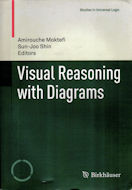The author presents Venn diagrams as a formal system of representation equipped with its own syntax and semantics and specifies rules of transformation that make this system sound and complete. The system is then extended to the equivalent of a first-order monadic language. The soundness of these diagrammatic systems refutes the contention that graphical representation is misleading in reasoning. The validity of the transformation rules ensures that the correct application of the rules will not lead to fallacies. The book concludes with a discussion of some fundamental differences between graphical systems and linguistic systems.
This groundbreaking work will have important influence on research in logic, philosophy, and knowledge representation.

